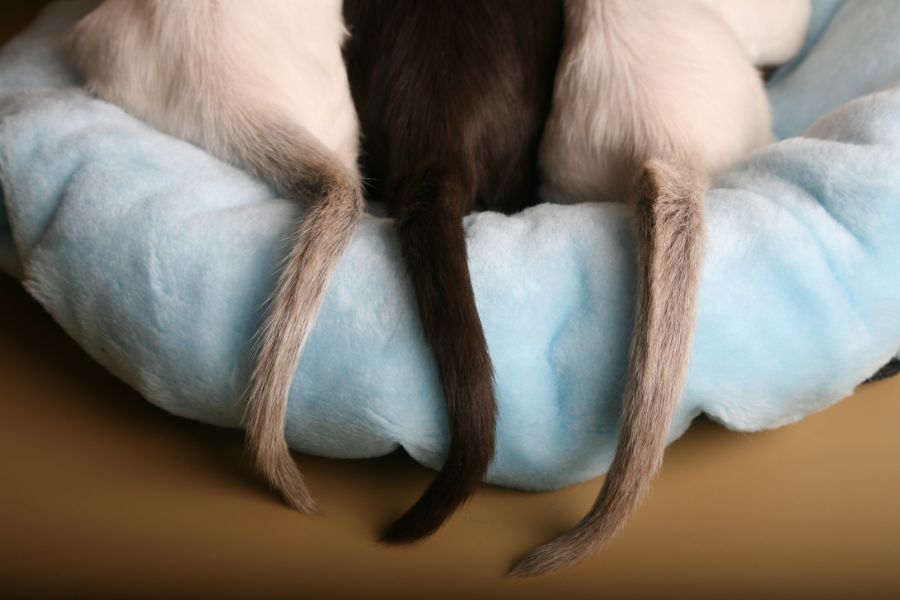Decoding Cat Behavior Through Their Tail

Oh, cats. You regale us with your chirpy hunting skills, warm us with your snuggly bellies, and inspire us through your dazzling acrobatics. But when it comes to understanding and admiring cat behavior, one thing is very clear: their tail acts like a barometer, and it’s up to us to know what it all means.
Swish and Flick
Cat body language uses various body parts to convey fairly precise emotions. The ears, whiskers, and eyes, for example, are all expressive and depending on the cat’s mood, they have an impressive range to them.
Feline Body Language
Cats chat in lots of different ways. Feline body language employs lots of postures and vocalizations to say whether they feel fearful, defensive, irritated, playful, or content. Even if you’re not a cat connoisseur, you’re likely skilled at spotting a happy cat versus a frightened or aggressive one.
The Obvious Choice
Amazingly, a cat’s tail has the ability to communicate highly specific emotions. Through precise positioning, action, and appearance, the tail clearly articulates feline emotions and moods.
- Pointed up – One of the finest examples of cat behavior is seen with a straight up and down tail. This indicates openness, friendliness, and approachability. If you also notice that the cat’s tail is quivering, they are very happy to be near you. Typically, cats may walk around with their tail held straight out behind them, or held in a relaxed fashion by the ground. When called or beckoned, watch that tail shoot straight up!
- Question mark – When the tail is up but punctuated with a slight curl at the tip they may have some doubts about their surroundings. They’re still feeling positive, but somewhat reserved. Be sure to offer lots of reassurance.
- Down and out – When the tail is low to the ground they may feel slightly defensive or submissive (especially if the tail is trying to cover their belly). If held tautly, this commonly seen cat behavior can lead to aggression.
Clear Cat Behavior
While it’s helpful to look at tail positioning, it’s equally important to mind what the tail is doing. Despite a cat’s tail being upright (meaning friendly), if it’s puffed up and bristling they may feel threatened or afraid.
Similarly, a twitching or swishing tail can express indifference, alertness, anxiety, doubt, and even irritation. Taking into account what a cat’s eyes, ears, and voice are all doing can help you conclude a cat’s state of mind.
If a cat experiences pain, you’ll know it by defensive postures, increased vocalizations and withdrawal. Before introducing your cat to new experiences, give them lots of advance notice to prepare.
The More You Know
As it is among people, human-cat relationships can flourish when cat behavior is not only understood but respected. They are clear communicators, but sometimes their emotions and moods are incredibly subtle to people. Look closely, give your cat space when they need it, and always offer a calm, loving presence to build trust and an affectionate friendship.
If you have further questions about amusing or confusing cat behavior, please feel free to contact us. We’re always happy to help at the Whole Pet Vet Hospital & Wellness Center.
